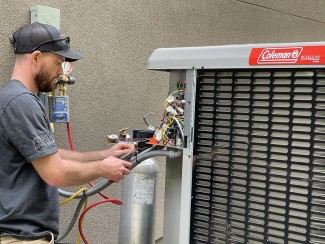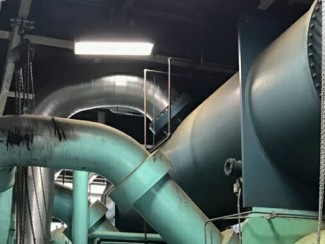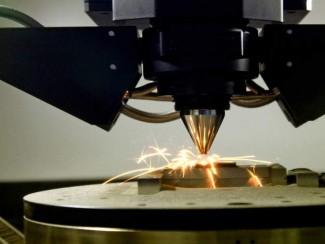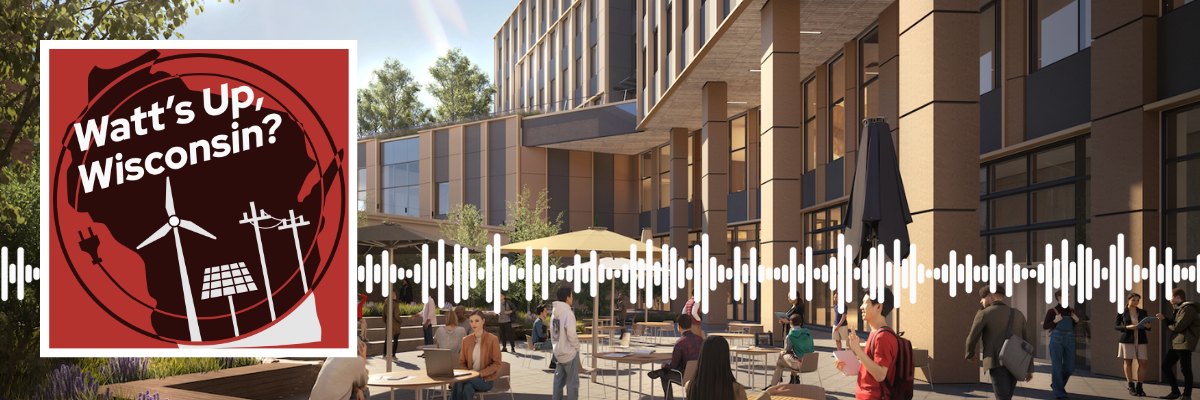
Buildings are unavoidable. We all use them. We turn on the lights, heat and cool our homes, run refrigerators, charge our devices. But buildings use a lot of energy.
In this episode of Watt's Up, Wisconsin?, we break down why buildings consume so much energy and ways we can make buildings more efficient. We speak to UW–Madison's Joy Altwies about what makes a building efficient and ways we can make buildings more sustainable, both for the environment and for the people that occupy it. Then, we talk to the founding director of UW–Madison's School of Computer, Data and Information Sciences (CDIS), Tom Erickson, about the new CDIS building on the university's campus, which is striving to be the most sustainable building on campus.
Do you have a question about energy in Wisconsin? Ask the Wisconsin Energy Institute at communications@energy.wisc.edu or tweet us and tag #WattsUpWI.
Listen to Watt's Up, Wisconsin? on Apple podcasts, Spotify podcasts, Google Podcasts, Youtube, or anywhere you find podcasts.
Guests
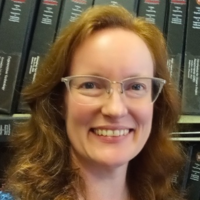 Joy Altwies, Program Director for the University of Wisconsin-Madison Office of Interdisciplinary Professional Programs and of the Master of Sustainable Systems Engineering (SSE) degree program
Joy Altwies, Program Director for the University of Wisconsin-Madison Office of Interdisciplinary Professional Programs and of the Master of Sustainable Systems Engineering (SSE) degree program
Since 2004, Joy has developed and taught continuing education courses emphasizing high performance building design and construction, mechanical system design and operation, energy efficiency, and commissioning.
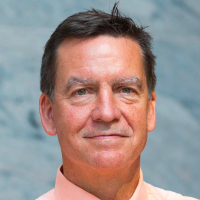 Tom Erickson, Founding Director of UW–Madison's School of Computer, Data & Information Sciences (CDIS) and Executive Associate Dean of Strategy and Innovation for UW–Madison's College of Letters & Science
Tom Erickson, Founding Director of UW–Madison's School of Computer, Data & Information Sciences (CDIS) and Executive Associate Dean of Strategy and Innovation for UW–Madison's College of Letters & Science
Tom is the founding director of CDIS. CDIS's new home is designed to be the most sustainable facility on campus, the 328,000 square foot building.
Credits
 Britta Wellenstein, Host
Britta Wellenstein, Host
Britta is a Wisconsin Energy Institute communications intern and UW–Madison undergraduate majoring in Life Sciences Communication and Environmental Studies.
This episode was produced by Britta Wellenstein and Michelle Chung.
Theme music by Eden Comer.
Trascript
Britta Wellenstein: It seems like construction is everywhere.
[construction noise]
Cranes, trucks and cones, crowds, street corners as new apartment buildings or office spaces are put up, the annoyance of construction is only a fraction of a building's lifetime. Once it's built, it sits and gets used. Lights turn on. Air conditioning runs. People come and go. Until ultimately...
[wrecking noises]
This whole life cycle of a building consumes a lot of energy and produces a lot of emissions.
The International Energy Agency, the IEA, estimates that buildings contribute about 40% of annual carbon dioxide emissions. Today on Watt's Up, Wisconsin, we'll be exploring our built environment, looking to understand why our buildings use so much energy and what we can do to make them more efficient.
[light switch]
Britta Wellenstein: You're listening to Watt's Up, Wisconsin, brought to you by the Wisconsin Energy Institute, where we explore your questions on energy in Wisconsin.
[cow moo]
I'm communications intern Britta Wellenstein. You're not alone when you think construction seems to be everywhere. With the population expected to grow to 9.8 billion by 2050, infrastructure will need to keep up. But there's a lot that can be done to make sure these new buildings consume less energy and have lower carbon footprints.
To learn more about building efficiency, I spoke to Joy Altwies from the University of Wisconsin–Madison. Joy is the program director for the Office of Interdisciplinary Professional Programs and the Masters of Sustainable Systems Engineering at UW.
Britta Wellenstein: What would you say is the overarching goal of building efficiency?
Joy Altwies: So with our buildings, I would say the whole point is to reduce our use of resources. That sounds kind of straightforward, but when you think about it, why would you want to waste resources, right? So with our buildings, there's a lot of things we can do differently compared to how we've traditionally designed, built and operated buildings that can be much more efficient, both from an environmental perspective and also for the health of the occupants.
So there's a lot of things we're trying to accomplish to actually reduce resources. A lot of times people get caught up just in looking at the energy part of it. But it's not just energy. There's a lot of other environmental aspects and indoor health that are just as important.
Britta Wellenstein: Yeah, and that is kind of my next question, because a lot of the numbers people cite for buildings is usually the energy consumption, which I will say right now. I mean, the building sector accounts for about 40% of annual global carbon dioxide emissions and a lot of that comes from just the operations and like the occupancy of the building, and then a portion of that also comes from construction. So what's kind of accounting for these numbers and for this energy consumption and CO2 emission from buildings?
Joy Altwies: So the first thing I want to point out is when you talk about the building sector, to understand what that means, you need to look at the whole economy. So the economy, when you look at where energy goes, they basically divide it into three categories the building sector industry and transportation. So when we talk about the building sector, we're talking about anything that is built, basically anything with walls and a roof that you can walk into.
So any of the emissions associated with that sector are from either construction of buildings or operation of buildings. When you look at where does the energy go? It's essentially two pieces. There's electricity and then there's direct fuel. Every building home out there, most of them have both. The easy one to understand is when you burn fuel directly in the building.
So whether it's your house and you have a natural gas furnace or whether it's a commercial building or a warehouse where they have maybe, you know, gas heaters, gas furnaces as well, perhaps even gas water heaters, they're burning that fuel directly on site. So that's where the emissions are coming from. The electricity piece is the one that tends to confuse people a little bit.
So a lot of the energy that we use in our buildings and homes is electricity, and so if you're not familiar with this area, you might think, well, how how is electricity causing any emissions? Well, you have to trace it back to where it came from. So the electricity doesn't just appear. Right? So it's coming from either your local utility or if you're really ahead of the game, perhaps you're generating your electricity onsite.
But if it's coming from your local utility, you've got to look at how are they making that electricity?
Britta Wellenstein: So Joyce says if you're a local utility company, you know, the one charging you for using electricity uses carbon based or high emission fuels like coal or natural gas to power their electrical lines. By using their electricity, you are indirectly producing emissions. But even if a building cannot change the ultimate source of energy, there's a lot they can do to decrease how much energy they consume and thus their carbon impact.
Joy Altwies: You can do all kinds of things to reduce emissions. It's helpful to look at the lifecycle phases of buildings. So we have the construction, the operation, and then at the end of life we can either renovate or we can demolish or deconstruct. Every one of those phases can be improved in the construction phase. That's a little more complicated.
So you got to think about, are there ways to reduce how much energy or other there are other sustainability aspects can happen during the construction phase? For example, how far you ship materials to a construction site that impacts how much energy was needed to actually build that building, right? We think of that as what we call embodied carbon or embodied energy.
So, for example, if you decided to build a new building or a new home and you decided to get all of your materials locally, the transportation required to get those materials would have a lot less fuel needed than if you, let's say, got all of your wood from the Pacific Northwest or you ordered a lot of marble from Italy.
So there's a lot of choices we can make materials, ways to reduce embodied carbon.
Britta Wellenstein: Although construction may be the most prominent and annoying part of the building's life. Operational activities, the pure occupation and use of a building are what consume the most energy. According to the IEA, building operations alone account for 30% of global final energy consumption and 26% of global energy related emissions. But there are ways to reduce this energy consumption.
Heating and cooling are one of the bigger drivers of energy consumption and emissions. The IEA reports that fossil fuels supply over 60% of heating demand. But a building's design can play a big role in limiting this. It first starts with the materials used better insulating materials and more efficient windows help make sure heat isn't lost in the winter or cooling isn't escaping in the summer.
Using passive design and daylighting can help decrease energy needed to heat and cool buildings. Passive solar design is a design technique that uses daylight to both help light an area, but also naturally heat an area. Likewise, greenery and green roofs help to naturally cool buildings, but the mechanical heating and cooling systems can also be made more sustainable.
Joy Altwies: There are a lot of things that we can do to recover wasted heat, for example, or to provide more efficient cooling. It can be as simple as choosing the most efficient appliance. Let's say you're talking about your home. There are definitely differences. If you're looking at a heating system. Everybody knows well, hopefully everybody knows those yellow energy guide labels from the government, right?
If you were to look at your furnace, they come with those as well. You can buy a more efficient one versus a less efficient one. When you get into more complicated systems like commercial buildings, there's lots of options. I have an entire professional society dedicated to figuring out how to do this better. We talk about things like dedicated outdoor air systems.
We talk about things like high efficiency chillers. We talk about geothermal energy systems. Geo is a real big one right now because a lot of buildings are really trying to what they call decarbonize. So they're trying to electrify. So one of the ways you can do heating and cooling with electricity efficiently is to use a geothermal system. So that's a big one that's coming up as a trend right now.
Again, I have to caution folks, make sure you're checking your grid. If you're if you're going to an all electric building, make sure you're on a clean grid. You don't want to actually make things worse in the interim. I know eventually we'll get to the point where our utility grids are pretty clean, but we're not quite there yet. So be careful with that. But there's tons of things just in heating and cooling alone.
Britta Wellenstein: However, these mechanical changes aren't something many existing buildings can implement. But there are small changes that can make a big difference, like switching to LED light bulbs, which use 75% less energy than incandescent light bulbs, according to the Department of Energy. As Joy has seen, a lot of this change comes from the individuals occupying a building and pushing for energy reducing measures.
Joy Altwies: In the operation phase, in my experience with some of the research that we've gotten done in ASHRAE, which is my professional society, we found that one of the biggest factors that impact whether a building is a high performance long term is actually the people running it. So it's the people. If you have dedicated energy managers, facility managers who really care about energy, if you have occupants in your building who are dedicated and excited about having a sustainable building, that makes a huge, surprisingly huge difference in terms of the overall building performance.
You can have simple, basic systems in a building that aren't technically all that super high efficient or high tech, but if you have dedicated people running them, it's it makes all the difference. It can be as simple as little things like turning off the lights at night, turning your computer off at night, setting the temperature back at night when people are not there.
It's simple things like that that make a big difference. And I don't want to just focus on energy, like you say, focusing on energy is great and we definitely need to do it. But sustainability in buildings is not just energy. There's a lots of things, especially health. The reason we have buildings is to serve some sort of purpose for people, right?
So we don't want to ignore the people who are in the buildings in their whether it's your home or where you work, making sure we're paying attention to how much like ventilation air, how much outside air, choosing materials that don't off gas, toxic emissions. A lot of our products do that. You may not realize it. People love new car smell, but I hate to tell you that's not a good thing.
So choosing materials for health reasons, connection to the outdoors. They call it biophilia. Being able to go outdoors. Sometimes we have things like green roof terraces and things that connect to the indoors and the outdoors. It's a health aspect, so finding ways to make buildings healthier.
But sometimes there's weird stuff like designing your buildings to have prominent inviting staircases. If you walk into the building and you see the stairs right there and they look really nice, if you just need to go to an upper floor, maybe you'll choose the stairs instead of the elevator. Right? So it's not only is that impacting your health a little bit, but it's also just a tiny reduction in electricity from not using the elevator.
Right? So it's things like that. It's this, you know, careful attention to design features like that.
Britta Wellenstein: I think is interesting to not split, but you have to have good design both in terms of people and how they interact with the space and then also in terms of energy. But then you also need someone to maintain it. And I feel like we often miss one or the other in that sort of toggle.
Joy Altwies: Yeah, and it's hard with facility management in particular. We're not doing a good job industrywide in terms of incentivizing and hiring folks to go into that industry to care strongly about the performance. We don't really incentivize them to, you know, what's your energy goal for next year? You know, that kind of thing. So, you know, for a lot of building owners, they're concerned with other aspects of their building operation. They're not as concerned with the energy and the environment, but, you know, it varies by owner. But we really need to have, you know, a stronger focus on facility engineering as a career and something with advancement and good pay and trying to draw in folks who have, you know, a little bit of a tech leaning to operate the systems and make a career out of.
Britta Wellenstein: And you mentioned there, that's not really a motivation to go back year in year and check how the building's operating. But there is a lot of motivation in the design side of things, which leads me to LEED certified buildings. First off, LEED is an acronym. I have no idea what it stands for, actually. And then can you explain what that acronym means?
Joy Altwies: Absolutely. So LEED, which is LEED, stands for Leadership in Energy and Environmental Design, and it is a green building rating system. It's been around since the late nineties, and it's run by an organization called the U.S. Green Building Council. And it's not the only green building rating system out there, but it's one of the more popular ones.
LEED is pretty flexible. They they have categories and then you can pick and choose. You can as long as you do enough to get enough points to get the award, it's pretty flexible. So they have categories like your your site, So sustainable sites, water efficiency, energy efficiency, materials and resources. So they have all kinds of categories and they have points in each one of them.
It's flexible for building owners. It's a really nice program to help building owners sort of enter that market to say how green can I be? They can go from the entry level of doing just enough to get their first award or, you know, if they're building a lot of buildings or if they're just want to really show what they can do.
They can go as high as platinum, which is obviously getting a lot more points.
Britta Wellenstein: But LEED is still only in the initial construction of the building. It doesn't kind of check back in to see how they're operating.
Joy Altwies: Well, they do now, actually, they have. And some of the later versions now, they do require you to have a plan in place for your operation. They have what they call LEED for existing buildings. Okay. So they have the new construction version. And then now they want you to also continue on into the existing building for after operation.
Britta Wellenstein: We reached the last stage of a building.
[crash noise]
Hey, but it's not all wrecking ball demolition.
Joy Altwies: For end of life. So when we get to the end of the life of a building, there's two things you're going to do. Well, there's actually three. You can renovate, you can demolish or you can deconstruct. And so I think everybody hopefully knows what renovation is. I won't go into that.
Demolition, of course, is, you know, smashing it and sending it to the landfill pretty much. Right? When you knock it down, yeah, scoop it up, take it to a landfill. And that's historically what we've done. Deconstruction is actually a much better idea. And deconstruction is where we go in and eat exactly what it sounds like. We take it apart, salvage the good stuff and reuse the good stuff as much as we can, and there's a lot of opportunity to do that.
There's actually two or three things that make that more viable. For one, you need to have a local market for the materials. Our cities and towns and our regions need to have a way to find buyers for those deconstructed materials. You also need labor. It does take longer to deconstruct a building and you need people to do it and then you need time.
If you're under a time crunch, it's going to be tough to do deconstruction effectively. So a lot of proper planning needs to go into it. And there's one sort of additional item that is going to be a little harder to solve, and that is we need to build our buildings initially with deconstructable materials.
Britta Wellenstein: Yeah, So that's also front of house kind of design.
Joy Altwies: Yeah. So we consider unfortunately, we're finding right now as we're trying to deconstruct some of the buildings that some of the materials we've used over the last half century or so are not deconstructed by either the glues we used or the binders or the fillers or whatever. And we try to take it apart and it just destroys the materials.
Britta Wellenstein: Then do you know what materials now are being able to be salvaged?
Joy Altwies: Well, the big ones are things like brick, you know, the ones that are clearly if you can get them out, they're ready to be reused if they're clean. Right. Other things are not. They can be torn out and repurposed but not reused. Just for example, drywall. In some cases, you can grind that up and reuse it like for agricultural purposes, but it's not a direct reuse of like you're not putting it up in another building.
Things like brick is a big one. Sometimes they can grind concrete materials and reuse those as sort of almost reuse, but, you know, repurposing it on the next site, on the state building site, there's a lot of salvageable wood, some beautiful old wood and some old some of the old buildings. And you'd be surprised where you find, you know, places where you wouldn't expect it, and you just walk in and you see these gorgeous beams. You're like, oh my gosh, please tell me you're not crushing that. So there's a lot of things like that you find in some surprising places.
Britta Wellenstein: As we think about old buildings. So someone has an older building, they're thinking about it, they're tearing it down or retrofitting it to serve their needs. So from a sustainability aspect, is it better to tear that down and build something new that you can add all the parts of design and heating and cooling you want? Or is it better to just retrofit these old materials?
Joy Altwies: And that's a hard one. That's a hard question. It's hard because there's no direct answer for everybody. From a strictly embodied energy or embodied carbon point of view, most of the studies I've seen to date have shown that reusing old buildings is the better choice if you can. But that's the question. Can you? Some old buildings we just can't save. Some buildings we don't want to save, and there's can be a variety of reasons.
If the original design was so terrible that it's not going to serve any purpose or if it's going to be worse than just tearing it down, sometimes there's contamination of various types of things, asbestos, etc. There can be severe deterioration, and sometimes it's economic, sometimes the cost is just so high to do it that you can't.
Now those are all the bad things, but there's also lots of opportunity to actually reuse buildings into something you wouldn't you would not even believe. I'm going to give you an example that is my absolute favorite for the last couple of years. It's actually here in Wisconsin. I, I highly recommend you go Google the Beloit College Student Center.
And they repurposed a coal plant.
Britta Wellenstein: Wow.
Joy Altwies: Actual Blackhawk Generating Station and coal plant.
Britta Wellenstein: Out of all the buildings. that was the last one I was expecting.
Joy Altwies: Last thing you would ever imagine. You can turn a coal plant into a student center. It's absolutely inspiring. And if so, if a coal plant can be turned into a useful student center, I don't know. I think we can do anything.
Britta Wellenstein: Then to transition to a last question, what are your hopes for the future of building efficiency? What what you see is like the ideal future.
Joy Altwies: I think we are on a really good track right now, seeing what's going on in our in the industry in terms of current building design, it's become much more mainstream to have green things, sustainability features considered in a lot of projects. We've got certain areas of the country who that are adopting green codes either as a requirement or an option, so getting everybody to build green, which is exciting. I've been around long enough to know that 20 years ago it was pulling teeth to get anybody to even consider it, you know? So we're making huge strides. I think as the grid gets cleaner, it's going to be easier to do things. It's going to be easier to justify a lot of the choices of systems.
I mean, we're only one sector, one of the three sectors in the economy. But we we affect everybody. We all interact with the built environment. So the greener we can make it and it's so inspiring to see such great examples. And buildings like schools and college campus buildings that are open to the public, where the public can come see what's being done, either through interactive exhibits or seeing, you know, what was designed in the building or taking a tour that just inspires everybody I think to see what's possible.
Britta Wellenstein: As Joy said, looking at new technologies and design features buildings are installing can be incredibly fascinating. So I did just that to see how efficient buildings are designed and what it looks like to implement these changes. I looked at the new Computer, Data, and Information Sciences building actively being constructed on UW–Madison's campus.
[background construction noise]
Britta Wellenstein: I am at the CDIS construction grounds.
It's tucked in between the Johnson and University Avenue. There is a backhoe, an excavator, a bunch of piles of four by fours and two by fours and all of these construction joints.
[end of background construction noise]
Britta Wellenstein: To learn more about sustainable design, I spoke to Tom Erickson, the head of the CDIS Building.
Tom Erickson: So the new building is designed to be a home for our school, which is a new school we created in 2019. It includes a combination of the departments of Computer Sciences, Statistics, and the Information School.
Britta Wellenstein: The building is expected to be LEED Platinum certified, the highest LEED certification.
Tom Erickson: One of the stipulations our donor had is to make it the most sustainable building on campus. That is our goal. We have some really fun and interesting things that are going to be apparent or obvious, such as solar panels on the roof and green roofs. That greenery is also part of the sustainability. So how much biophilia we're putting in and outside of the building is important consideration as well.
So there are some other features that you won't just naturally see but know that they're there. We're putting triple pane windows in which which is a luxury for a building where we're able to do that because of fortunate donors. We–this is a entirely privately funded building, so there's no state funding going into the building. So we get a chance to design it to a standard where we really want to be this sustainable.
It's it's actually hard, believe it or not, to build state buildings that are highly sustainable because it costs more money. But we're putting in a triple pane windows. We've got a very interesting cooling system that is done through bars that are in the ceiling of each room and those bars carry cold water and that will cool the building down, and that's much more sustainable and than conventional forced air air conditioning.
And then another thing that you won't see, but it's a big part of the whole picture is recycling stormwater or rainwater when it rains outside, will be collecting that water and putting them into large underground tanks.
Britta Wellenstein: This collected rainwater will be used to water the green roofs as well as restrooms to flush toilets. But outside of operational design factors, the design focuses on sustainable construction as well.
Tom Erickson: One of the things we thought about, Britta, was a carbon footprint around just construction of the building. So it's quite common, you know, the facades for these buildings. We want to make them look nice, right? And another thing we needed to do is to fit into the neighborhood. But the facades for the some of the other buildings, in the case of the chemistry building, the facades come from Germany, but we want it to be more locally sourced, and we're very fortunate that our architects came up with something called high performance concrete. So if it's not very thick, it still is very strong and we'll use that as the facade of the site in the building. It can be manufactured locally.
Britta Wellenstein: So I know many of these practices to make buildings more sustainable, they're often more expensive at the forefront, but then you have less energy costs. So how was that a factor in thinking about the maintenance of the building and not just the design?
Tom Erickson: Well, that was a huge factor. I'm glad you asked that question because, you know, after we do the design and then there's a hard part that comes, it's called the bidding. And then because our bid was higher than what our budget was, we had to come in and look at how we're going to cut costs. The good news is you know, in a lot of these areas like the triple pane glass, for example, that will save us a lot of money in heating in the winter.
And so we are excited in the long run on the maintenance of the building that these things will have an impact. As we were trying to cut costs in there, we were able to weigh the pros and cons of each of these items and decide whether we wanted to continue with that design with the notion of what it will save us in the long run versus a cut the upfront costs.
From a maintenance perspective, we did a very thorough review after the design to make sure that building was highly maintainable and we were keeping those things that were going to be cost saving versus adding to maintenance costs downstream.
Britta Wellenstein: The building is expected to be completed and occupied in fall of 2025, but planning for the building looked at well past the opening day.
Tom Erickson: We didn't think about sustainability just from the energy use and consumption and that we also thought about it in terms of how long the building will live. Sustainable to us also means will this have a long lifetime? The interior is very flexible. There is an ability to easily change walls and move things and redesign. So in 50 years time, if it's not CDIS in the building, it's someone else. They can configure it to their needs. The simplicity of the design was really important too, in terms of not trying to create anything that we thought in time might date itself. It might be the coolest thing right now. But how will we feel about this in 50 years time?
[background construction noise]
Britta Wellenstein: Right now you can see roughly two stories of just their bone structure and then a pit that's kind of it. It's weird to think that there was something here before, and it's even weirder to think of what's going to be here come two years time.
[end of background construction noise]
Thanks for listening in. Do you have questions about energy? Wondering how new energy solutions are taking off in Wisconsin? Let us know by sending an email at communications@energy.wisc.edu or tweet @UWEnergy and tag #WattsUpWI.

